Didcot power station: Three hurt as cooling towers demolished
- Published
The moment Didcot power station's cooling towers were demolished
Three people suffered minor injuries as a disused power station's remaining cooling towers were demolished.
Didcot A's 375ft (114.3m) high towers were brought down using explosive charges on Sunday morning.
South Central Ambulance Service said one person was taken to hospital and two others were treated in a field outside the exclusion zone.
RWE Power, which owns the former coal-fired power station site, said it was investigating.
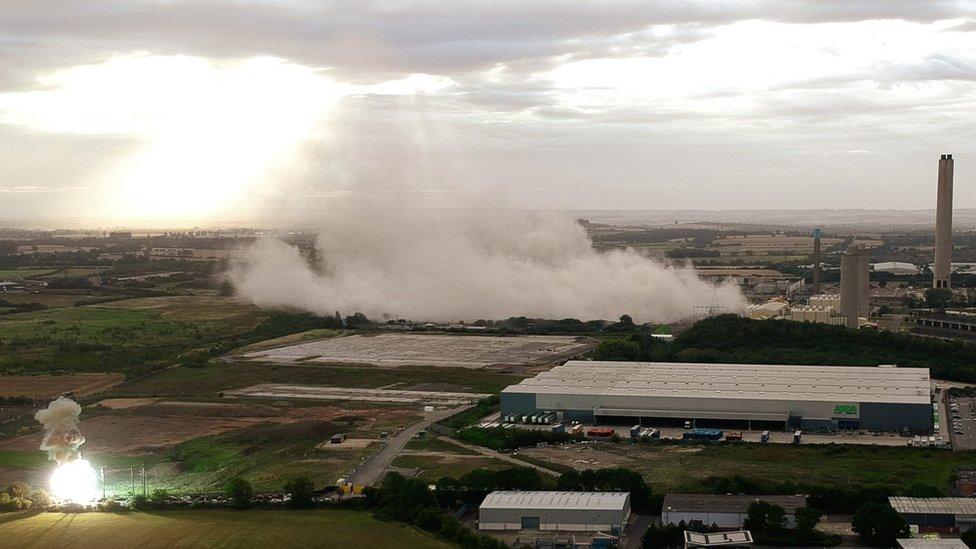
Onlookers saw an explosion (bottom left) as the towers fell
South Central Ambulance Service said the three people were treated for "minor injuries" but has not released any further details.
An exclusion zone had been set up around the former station, which was turned off in 2013 after 43 years in service.
Moments after the towers were demolished at 07:00 BST witnesses said a nearby electricity pole went up in flames.
Scottish and Southern Electricity Networks (SSEN) said material related to the demolition had struck overhead power lines.
Up to 49,000 homes were without power until it was restored by 08:20.
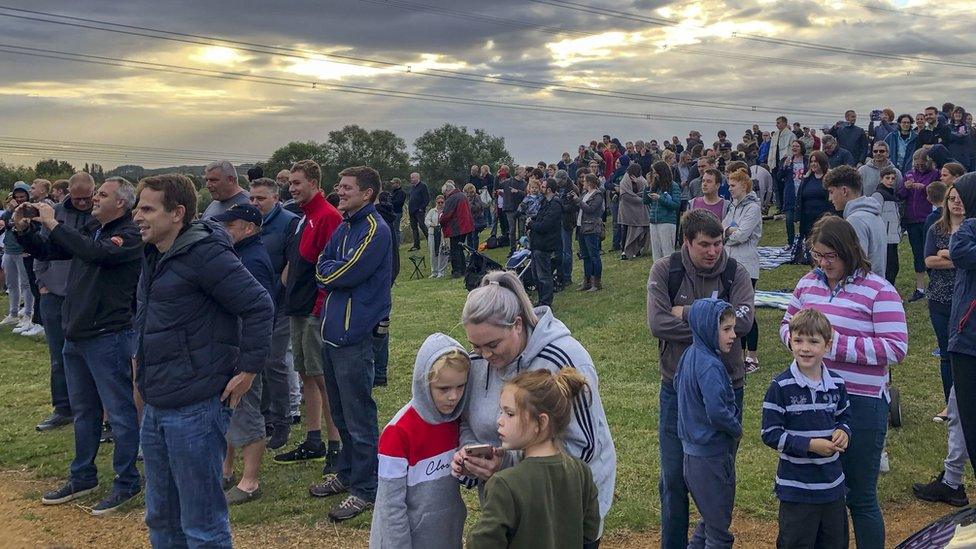
Crowds gathered to watch the cooling towers being demolished
RWE had previously warned onlookers not to attempt to view the demolition from close quarters.
In a statement it said it was "not aware" of debris from the demolition of the cooling towers leaving the safety exclusion zone.
"It is necessary to get further information from all parties involved. We are also interested in the results of a wider investigation which is going on to find out what has happened in Sutton Courtenay on the local electricity network," it added.
The Health and Safety Executive said it was carrying out initial inquiries with SSE, RWE and Brown and Mason - the firm that carried out the demolition - to understand what caused the failure of two overhead power lines close to the demolition.
It said it would then decide whether a formal investigation is required.

Didcot Power Station timeline
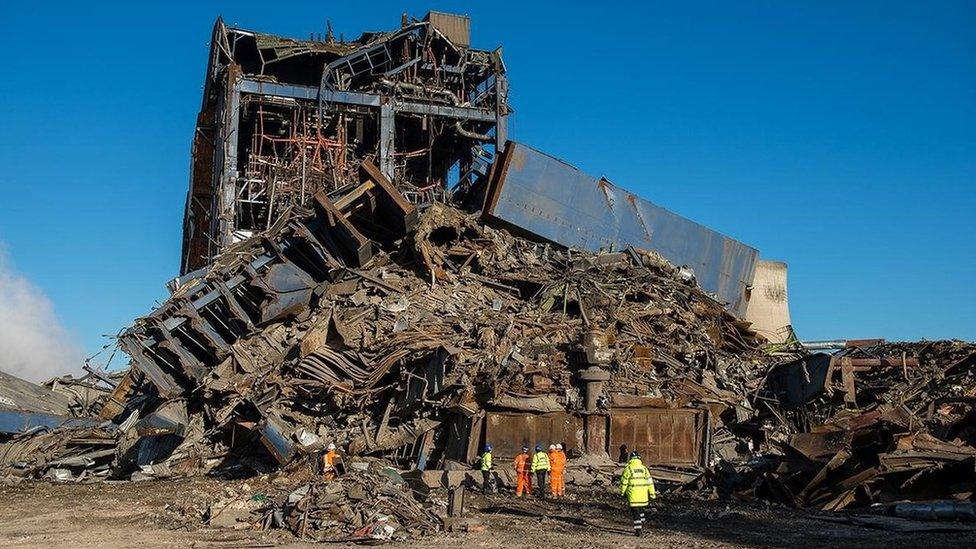
The Didcot power station boiler house was set for demolition when it collapsed
1964 - Building starts
1970 - Didcot A begins commercial operation
1994 - Construction starts on Didcot B, a gas fired station
1997 - Didcot B begins commercial operation
2003 - Voted Britain's third worst eyesore
2009 - Protestors climb chimney and stay there for two days
March 2013 - Didcot A closed
July 2014 - Three of its cooling towers are demolished
February 2016 - A major incident is declared after the boiler house collapses, and the body of worker Michael Collings is found
July 2016 - The remaining section of the boiler house is brought down using explosives
September 2016 - The bodies of Ken Cresswell, John Shaw, and Christopher Huxtable are recovered
December 2017 - An evidence file is passed to the Crown Prosecution Service by police
January 2018 - Thames Valley Police reveals it is considering manslaughter and gross negligence charges
- Published18 August 2019
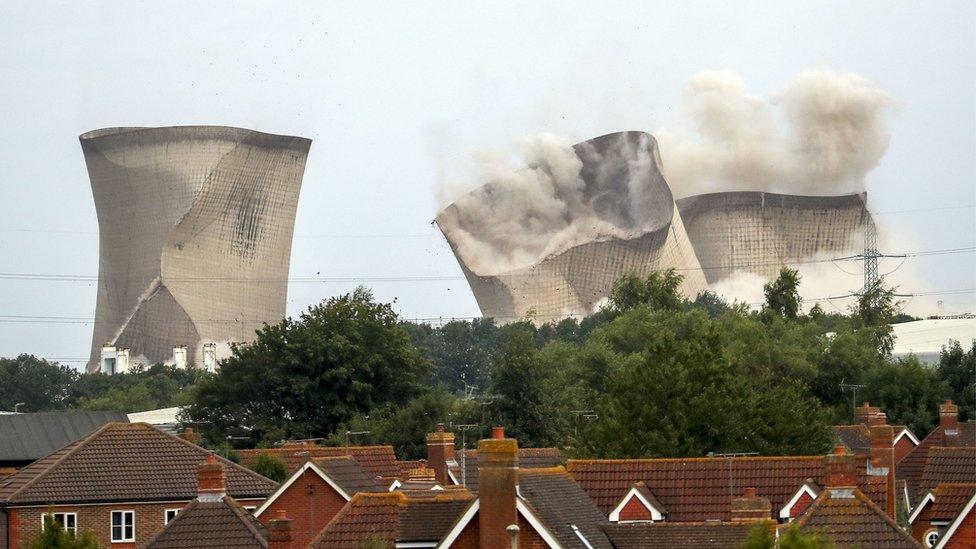
- Published16 August 2019

- Published18 July 2019
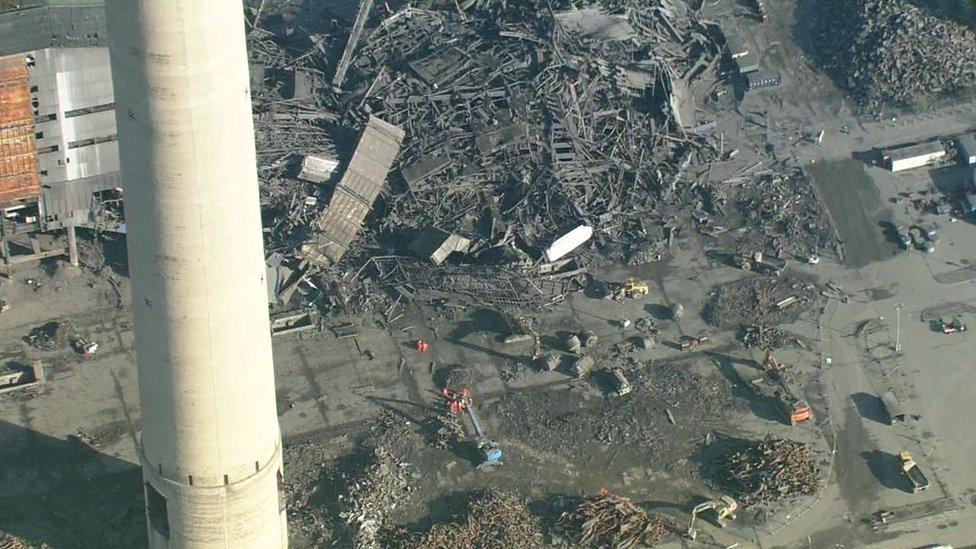
- Published23 February 2019
